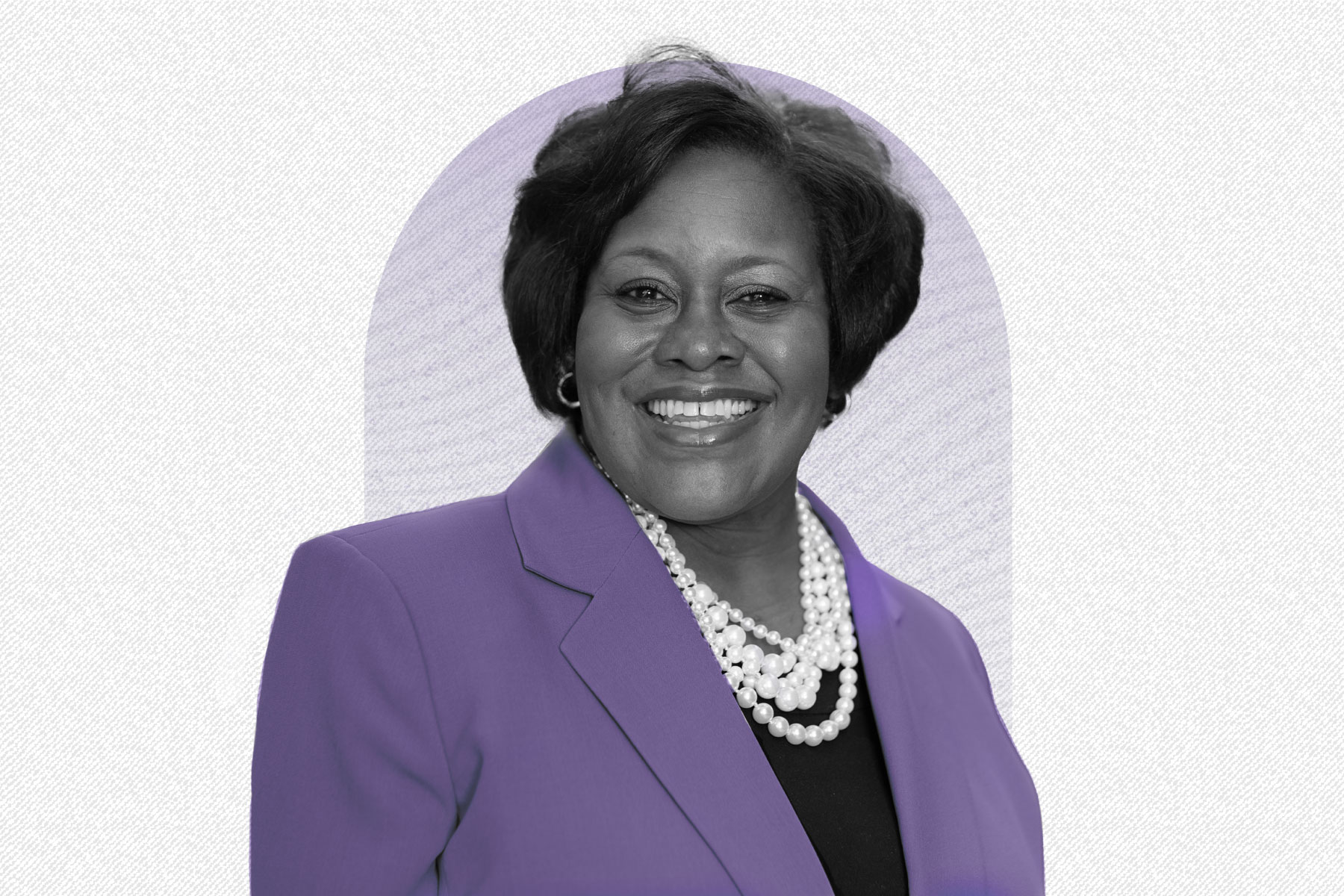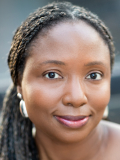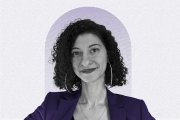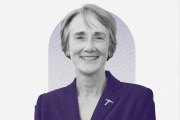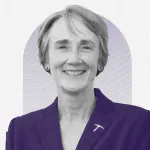Berenecea Johnson Eanes made history this month when she became the first woman to lead California State University, Los Angeles, since its founding in 1947. Widely known as Cal State LA, the institution belongs to the nation’s largest and most diverse public university system.
Eanes stepped into the role on January 8 after serving as president of York College, City University of New York (CUNY), since 2020 and interim president in 2019. The students in Jamaica, Queens, “They speak every language and they come from every walk of life,” Eanes said. “They were one of my greatest gifts ever. I am totally humbled and grateful for my time there. It was bittersweet to leave them.”
Only about a third of university presidents are women, and of those, 70 percent are White, 14 percent are Black, 8 percent are Latina, 4 percent are Asian or Asian American and 1 percent are Native American, according to the American Council on Education. As a Black woman with a background attending and teaching at historically Black colleges and universities (HBCUS) as well as predominantly White institutions and public and private ones, Eanes plans to draw on her wide range of experiences as she settles into Cal State LA.
The university has been designated by the federal government as a Hispanic-serving and minority-serving institution. It is home to the nation’s first Chicano studies department, and it hosted a televised forum for 2020 Democratic presidential candidates Kamala Harris, Bernie Sanders, Pete Buttigieg, Julián Castro and Tom Steyer to discuss Latinx issues.
Eanes’ short time at the university has not been uneventful. On January 22, members of the California Faculty Association union — which includes 29,000 professors, librarians, counselors and other personnel across California State University’s 23 campuses — started a strike for better pay, more parental leave and improved mental health support for students, among other asks. The faculty reached a tentative agreement with the university system after one day of striking.
“I very much respect people’s ability to exercise their rights,” said Eanes, who could hear the chants of demonstrators during her interview with The 19th. “I appreciate their commitment to peaceful discourse and ongoing conversation.”
Conversation is a priority for Eanes, who announced that she will start her tenure as president with a “100 Days of Listening” tour. The 19th spoke with Eanes about the importance of that effort, how it feels to make history as Cal State LA’s first woman president and the challenges of leading a university today, as Americans increasingly question the value of a college degree and higher education faces a nationwide backlash related to diversity, equity and inclusion.
This interview has been edited for length and clarity.
Nadra Nittle: You’re the first woman president of Cal State LA. How does it feel to break that glass ceiling?
Berenecea Johnson Eanes: I feel really honored and proud for this opportunity. Cal State LA is dear to my heart. I have been in some of the largest public higher education systems in the United States in the last years of my career, both being here and being in CUNY. Both are super, super dedicated to access, educating first-generation students, educating students from underrepresented groups. So it means a lot to me to be asked to be here at this time. It’s really special.
Do you think your identity and background give you a different perspective on leadership?
I think you take yourself everywhere you go. Every experience that you have as a person is going to be with you as a leader. I’m grateful for my family, my childhood journeys. All the things that make me who I am have fortified my journey as a leader. So I think that, especially at this time in history, it’s extremely important in the world of higher education to understand how powerful it is to be a culturally competent leader, to be a person committed to diversity, equity and inclusion, to be mindful of the landscape around the value of education, and how our young people are struggling with understanding whether or not it’s worth their time, but then trying to lead a campus that is worthy of everybody’s time and engagement and making sure that people understand that we want to have the best quality for all students.
You have been described as a “champion of diversity, equity and inclusion.” How do you feel about the DEI backlash that’s happening across the nation — whether it’s the banning of critical race theory or prohibitions against DEI in higher ed?
I’m grateful to have a lot of elders who have helped me look at how processes are playing out and given me an opportunity to be a participant in conversations that are true dialogues. And those are not easy these days, right, because it tends to feel as if you must be on one side. Having a dialogue is a rich part of being part of the diverse world, but there are some forces that have made it harder for people to have those dialogues, so I don’t minimize that. I’m a trained social worker. My master’s degree is in social work. My Ph.D. is in social work. So the ethics that are connected with my profession of choice put me in a great place to understand that the conversation is never over, and it’s never definitive. It is a fluid conversation, and it is impacted by current history, past history and future history.
You’ve said that you are passionate about student-centered leadership. Can you describe what this entails and why it is important for you to start your tenure at CSULA with the “100 Days of Listening” tour?
I believe that you learn more from listening than talking. So my vision is that we will have that “100 Days of Listening” and then we will embark on the next level of strategic planning for the campus together, and we’ll decide together what the goals are. So that’s important to me. I also feel like student-centered leadership has to do with data-driven decisions — understanding how many students you retain. How many students did you help get an internship? How many students went to study abroad? How many students graduated? It sounds too quantitative, but at the end of the day, we have to produce and so we have to be able to say, with sure confidence, “This is the amount of students we put out into the workforce last year.”
People say about Cal State LA, “Oh, it’s a hidden gem.” I don’t believe in hidden places. We will not be hidden. There will be no more hiding. So I’m very, very concerned that I put together a team that is interested in visibility, collaboration, communication, dedication, to the entire community, because we are L.A. We reflect everything that L.A. is, and everybody should know it.
You have an HBCU background. Cal State LA is a Hispanic-serving institution and a minority-serving institution. How might your HBCU experience translate to your current environment?
My own education background is two HBCUs and a private, Boston University. Then my work history includes several years in theAtlanta University Consortium at Morehouse College and teaching at Georgia State. So all of it goes together. I’m really gratified by understanding the power of building community. Many of those experiences helped me see very talented people build community for students that were helpful to build their future. Every experience gives you another tool, and I do feel as if I’ve served some really strong leaders. That also made a difference in being able to learn a lot about how you build a team and how you set goals and how you show success, but also how you do it with limited resources and with different cultural norms. I love everything about all my HBCU experiences because every campus has their own history and their own deep culture, just like this place will. So I think those experiences taught me what it meant to honor people’s history. You’ve got to honor who the people are. You’ve got to learn who the people are and what they like to do and how they like to celebrate and be with them.
Cal State Fullerton was also a Hispanic-serving institution. I was there for seven years. We had lots of student groups on campus. Our goal was to make sure that everybody felt valued, and they were able to be who they needed to be in the space. And I think that comes from all the places I’ve been.
What are your plans to make sure you retain students from underrepresented backgrounds and see them through until graduation?
We have a real opportunity to acknowledge and recognize our work ahead post COVID. None of our work is the same right now because we’re dealing with post-COVID realities around people coming back to school, in person or virtually. And then there’s just the reality whatever your graduation rate was before. So I think there are some aggressive things that can be done — intrusive advisement, investing in internship programs, study abroad, non-traditional spring break and all the different things that help people connect to their major. Technically, any campus, it’s all about what you’re going to do to make them stay. Are they worried about financial aid and financial pressures? There are things that all of us are constantly having to adjust and tweak as educators that are important to retention and graduation, and I’m still learning, so I don’t know all those things for Cal State LA yet, but I will. Where are our gaps in service? Do we know where the places are? Where do we lose them? What year do we lose them? Those nuances — that’s the work. That’s what you talk about.
Increasingly, reports are coming out that suggest students are questioning the value of a college education. They don’t think the possibility of accumulating lifelong debt is worth it. What are your thoughts on why a college education still matters?
We are in this time where people just want a more immediate guarantee for income and career. So I think we have to shift to be sure that we have the resources on campus for students to feel like, “If I go there, and I do this, somebody is going to help me, and I’m not going to leave there with nothing to do.”
Ultimately, it is a real conversation. It is an economic conversation for many families. Post-COVID it is a deeply economic conversation. I just came from a community that was totally devastated by COVID. Many of my students had to stop coming to school so they could take care of their families, and they are nowhere near recalibrating. So some of it is making data-driven decisions. We have to figure out what the real data is, how many students you have impacted by that.
Is there anything else you’d like people to know about you or your goals as a leader?
I want to just increase the communication, the collaboration and the synergy. I want people to see Cal State LA as a force in this space in the city, in this side of the community, but definitely all over in the CSU. I want people to feel welcome to come to our campus and to engage in so many of the wonderful things we have going on.
